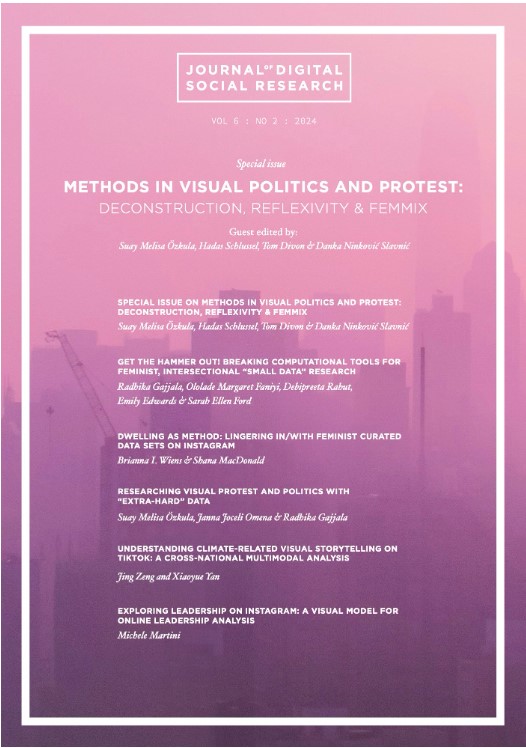Researching visual protest and politics with “extra-hard” data
DOI:
https://doi.org/10.33621/jdsr.v6i2.214Keywords:
visual methods, extra-hard data, quali-quanti methods, cross-platform studies, digital methods, feminist approachesAbstract
A range of scholars have criticised scholarly tendencies to focus on “easy” data such as provided by the low-hanging fruit of Twitter hashtag networks (Burgess & Bruns, 2015; Hargittai, 2020; Tromble, 2021). As a result, digital social research has been said to create a glut of studies that favour particular platforms, data forms, and networking dynamics, choices that may create ‘digital bias’ (Marres, 2017). These issues are particularly significant in visual data as the implicit nature of visuality means that platform spaces, text, and networked uses of visuals contribute to how visuals are interpreted in digital environments. In response to this issue, we present and critically reflect on new potentialities in software-based visual research on protest and politics, including: (1) rich cross-project comparisons; (2) complementing platform data with on-the-ground engagement, and (3) quali-quanti visual methods. These allow for rich data journeys through multi-modality, hybridity, comprehensive data curation, reiterative image data collection and interpretation, and the inclusion of contextual reflections in focused visual research, elements that provide meaning, texture, and context (= extra-hard data). We argue that visual digital methods consequently have the potential to provide nuanced, robust, and versatile analysis of visual data, if not necessitate these in a post-API age in which easy data access is no longer a given.
Downloads
Published
Issue
Section
License

This work is licensed under a Creative Commons Attribution-ShareAlike 4.0 International License.




